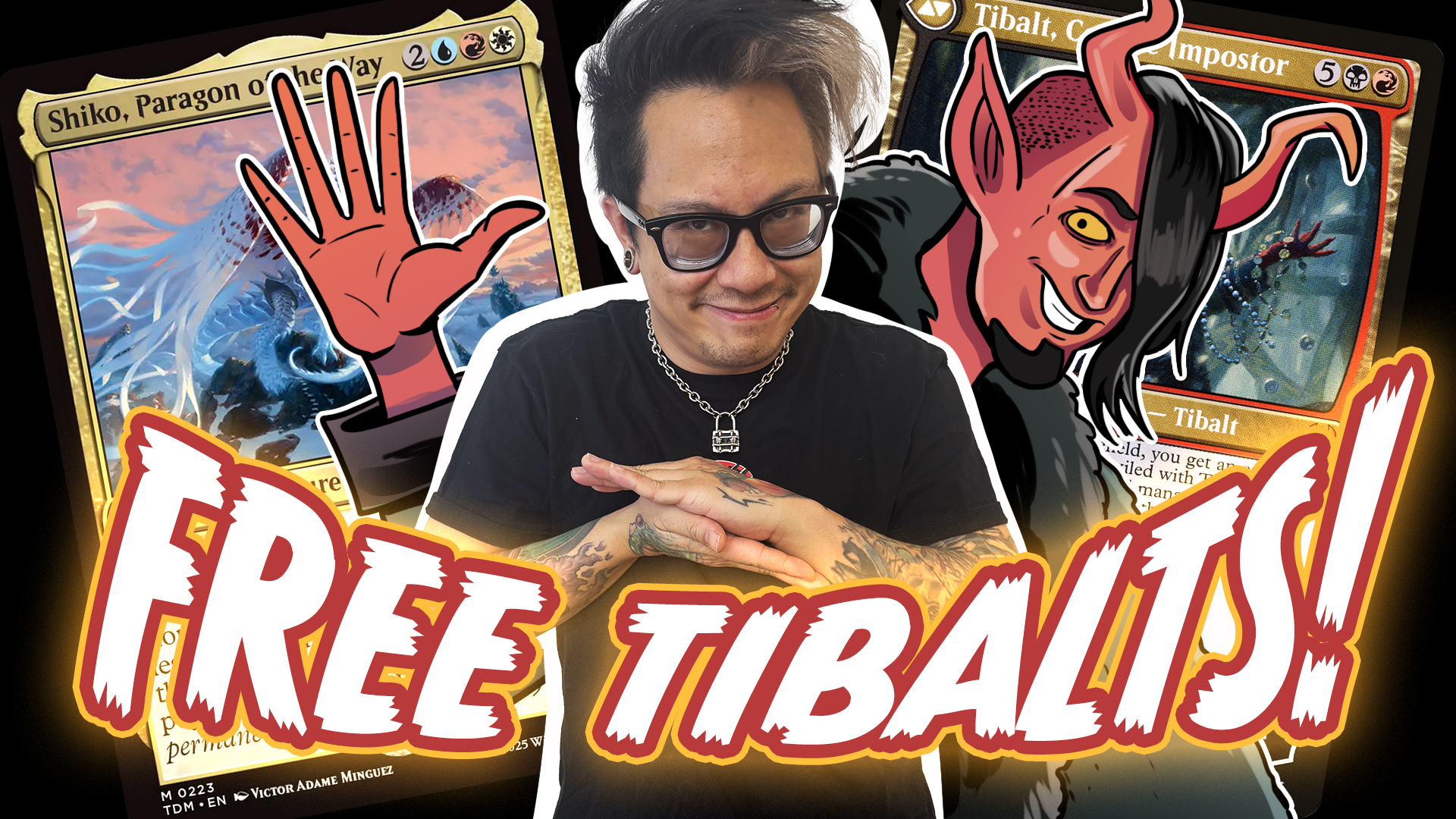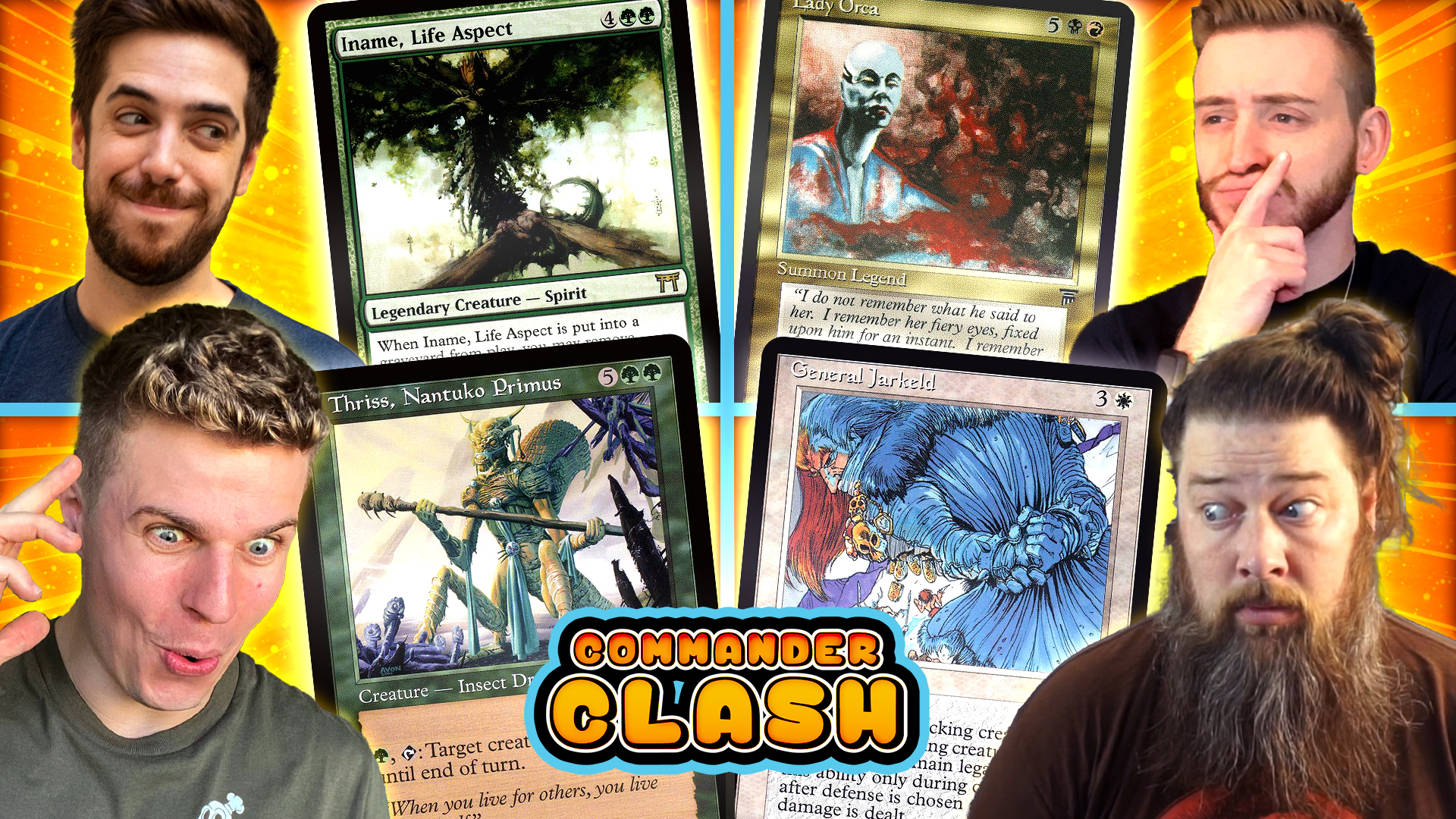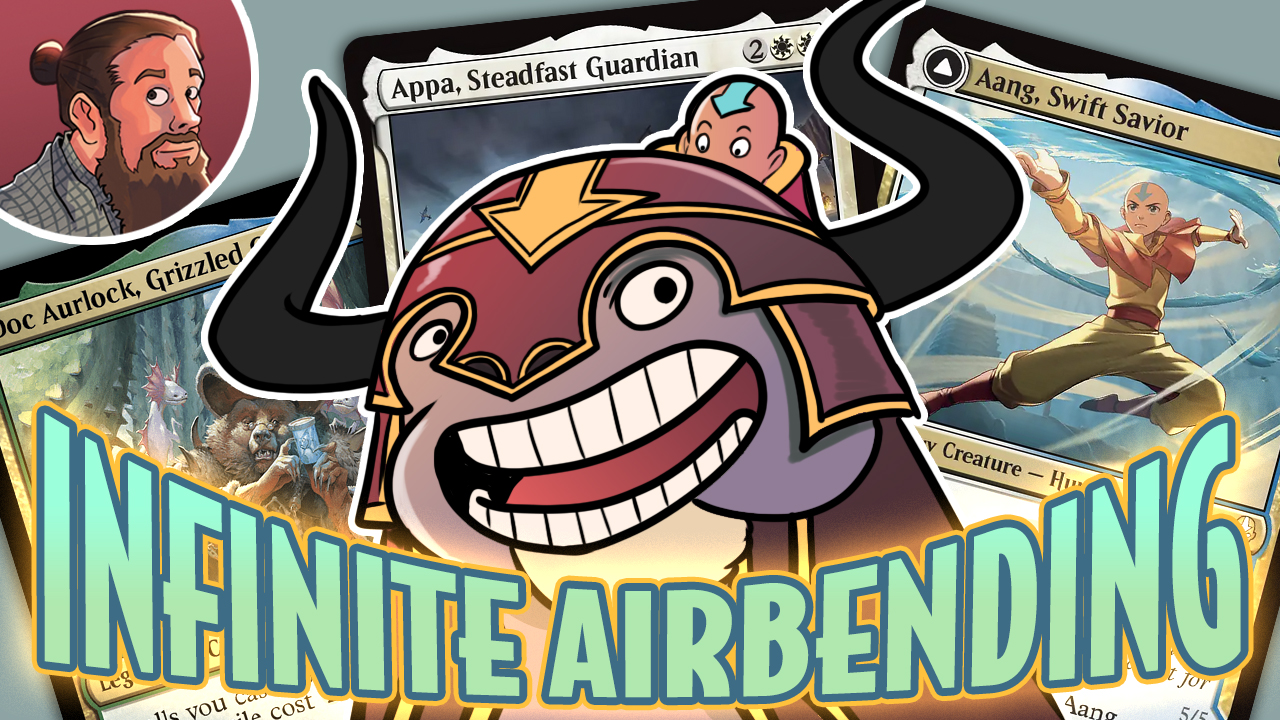The Power of a Deckbuilding Checklist | Commander Quickie
Hey friends, welcome back to another Commander Quickie! This episode I'm going to talk about the power of having a good deckbuilding checklist and why every Commander player should have one.
A deckbuilding checklist is a general list of minimum requirements your average good deck should have, regardless of the individual deck's goals or themes. It makes sure your deck is consistent and complete, helping identify what your deck might currently be lacking, letting you refine your deck lists independent of playtesting. It's a huge boon when building a new deck, acting as a guideline on what cards you should add to fill out a deck or which cards to cut so you can get down to 99. It's also a great tool for tuning existing decks, uncovering potential flaws in your deck that you can improve.
Keep in mind that deckbuilding checklists are general guidelines to help improve your deck, not strict rules that must be adhered to 100%. The Commander format is incredibly diverse and decks can deviate wildly from a generic checklist while still feeling consistent and complete. The checklist is just another tool to assist you if you want it, nothing more. For best results in tuning a list, a combination of a checklist, playtesting, probability math, and (most importantly!) playing cards you that find enjoyable is the way to go.
For this article I'll be using my budget deckbuilding checklist as a reference point. This is the same one I've been adding to all my Budget Commander deck over the years:
- 50 mana; lands and ramp, usually a 37–13 split
- 10 card draw
- 6 targeted removal; split between creature / artifact / enchantment removal
- 3 board wipes; creature-light decks might want one more, creature-heavy decks might want one less
- 2 graveyard recursion
- 2 flexible tutors; higher budgets I recommend more tutors
- 1 graveyard hate; since you need to keep Graveyard decks honest
- 1 surprise "I Win" card; something that can win games the turn you cast it without too much setup
The remaining deck slots are filled with whatever cards fit the deck's theme and add to the overall synergy. That's always my starting point, which is then tweaked to suit the individual deck's strategy and further tweaked with playtesting.
Keep in mind this checklist is made for your average casual or semi-competitive Commander deck with a budget restriction. These decks are usually looking to end the game around turns 8-12. This is not an optimal checklist for fully-powered $$$ decks, such as cEDH decks that are looking to end games by turn 3; those decks will often run around 30 lands, 16-20 ramp, and far more tutors, requiring thousands of dollars.
Mana (Lands & Ramp)
By far most important part of any deckbuilding checklist is making sure your deck has enough mana -- lands and ramp. The most common deckbuilding mistake I come across is people running far too little mana than they should be. Mana is often the most boring aspect of the deck, so people cut too much of it out during the brewing process to jam as many fun cards as possible. But cutting out your mana is a trap because it means you're less likely to ever cast your cool cards!
In my years of personal experience, examining good decklists, and talking to people much smarter than me, 50 mana sources is about the right number for most decks to shoot for, usually 37 lands and 13 ramp sources for a general budget deck. It sounds like a huge number at first but it'll make sense in a bit.
I'll use Muldrotha, the Gravetide as a deckbuilding example on figuring out the ratio of lands and ramp:

Lands
For figuring our lands, the two questions you need to ask yourself is:
- What's the average cmc of my spells?
- On what turn am I looking to close out the game?
The higher your deck's average cmc and the more turns required to win the game, the more lands you'll want to run. A super low cmc deck that wants to win on turns 1-4 will want to run as few lands as they can get away with since they're only interested in making their first 2-4 land drops and no more. On the other hand, a high cmc deck that wants to win on turns 10+ will want a higher land count so you can consistently hit your land drops on turns 5+.
Muldrotha Example. Our example Muldrotha deck wants to always play a land for the first 3 turns, ideally turn 4 as well. I would want at least a 90% chance to hit 3 lands by turn 3, and close to 90% by turn 4. We can math this out using probabilities. I suck at math, but luckily Frank Karsten covered this very problem in an excellent article that I highly recommend reading. According to his calculations, the minimum amount of lands you need for a 90% chance of 3 lands by turn 3 and a 74% chance at 4 lands by turn 4 is about 36 lands. If you want at least an 80% chance to hit 4 land drops by turn 4 then you need to bump the land count to 39-40. You don't want to go much higher than that though due to risk of mana flood. Frank's calculations assume the pre-london mulligan rule of going down 1 card each time you mulligan (no scry), not the Commander mulligan of one free mulligan at the start, so the % chance of hitting your lands is actually a little higher for us.
With that math in mind, if you want your deck to reliably make 4 land drops in the first 4 turns of the game, you should start with 36-39 lands and tweak from there.
Ramp
The question you must ask when figuring out your ramp is this: what am I ramping into?
You always want your ramp cards to ramp into your deck's key cards: the engine pieces. The purpose of your ramp is to get your engine going faster, speeding up the deck's game plan. If your deck's key engine is a 4cmc commander like Kaalia of the Vast, for example, then you will want to run ramp cards that can get her out faster, which means ramp that is between 0-2cmc so you can cast Kaalia on turn 3 or earlier instead of her usual turn 4. Ramp that doesn't get Kaalia out sooner is therefore much worse. On the flipside, if your key engine costs a ton of mana, like Kozilek, the Great Distortion, a big beefy ramp card like Thran Dynamo will get Kozilek out much earlier than a Mind Stone.
Muldrotha Example. Our Muldrotha, the Gravetide deck's core engine cards cost an average of five mana. Our deck wants to cast them as quickly as possible so we can start advancing our game plan. This is where our ramp comes in. The purpose of ramp is to let you cast your important spells a turn earlier than normal. A Rampant Growth cast on turn 2 or 3 means we can cast The Gitrog Monster on turn 4 instead of 5, assuming we hit our first 4 land drops (don't skimp on lands!). That doesn't sound like a big difference at first glance, but getting your engine online a turn faster can often have an enormous snowball effect in Commander. A good goal for our Muldrotha deck is to consistently cast a ramp spell in the first 3 turns of each game. To calculate this myself I used this hypergeometric calculator. Without mulligans, you'll need 14 ramp cards in your deck to have an 80% chance of casting at least one in the first 3 turns of the game. That's not amazing, but adding our free mulligan increases those odds. You can bump those odds up to 90% by running 20 ramp cards but that also increases the risk of flooding out.
Math and personal experience indicate to me that you'll want to start with 10-15 ramp cards and tweak from there. It's also important to consider what you're trying to ramp into. In the case of Muldrotha, if our important cards are 5cmc, we want our ramp cards to be castable on turns 1-3 so we can play our engines a turn early. In an Arixmethes, Slumbering Isle deck, a ramp spell that you can cast on turns 1-2 would mean you can cast your commander on turn 3, making 1-2cmc ramp is far more valuable than 3+cmc ramp. Or in Purphoros, Bronze-Blooded, a 5cmc commander full of expensive creatures, a 3cmc ramp card that taps for 2+ mana like Worn Powerstone is ideal because it lets you cast your commander two(!) turns early and start sneaking out your haymakers. Always remember the purpose of ramp in your deck and what you're using it for.



Tutors
In a 99-card singleton format, tutors are a powerful way to add consistency to your decks. Flexible tutors can fetch up the right card you need for whatever situation comes up: need to refill your hand? Need to exile a graveyard? Need to find removal for a creature / artifact / enchantment? Or need to find the last piece of your combo? That's what tutors are for. Not only do they help you find your silver bullets when the situation calls for them, but they also let you trim down on cards your running for the sake of redundancy. Instead of running X amount of card draw spells, for example, you can cut out the weakest ones and just tutor up the best ones when needed. Some decks, like combo decks, rely more heavily on tutors to function, but every deck can benefit from a few tutors.
If I was making budgetless checklist, then I would actually recommend more than just two tutors for your average deck. The best tutors allow you to cut out the weakest cards in your deck and just tutor the best ones instead when you need them. That's incredibly powerful. However, the best general tutors are very expensive: cards like Vampiric Tutor, Demonic Tutor, Finale of Devastation, all these are in the double digits. Some decks are fortunate to have access to many budget-friendly tutors in their niche, like my Budget Siona Aura primer. But most decks need to pay a pretty penny for the good tutors.
If you're building a deck on a budget, I'd aim to grab two of the cheapest tutors available to you. Cards like Diabolic Tutor are absolutely fine. You need some way to find your deck's silver bullets at the very least. But if budget is no obstacle, I'd load up on tutors: 10 is a fine number, for example.



And The Rest
After going pretty deep on explaining mana and tutors, the rest of the checklist is pretty straightforward:
- Card draw is important to refill your hand, out-grind your opponents, and smooth out your gameplay. It's also a decent alternative to running more tutors if you can't afford the good ones, since more cards drawn means more chances to find the card you were looking for. I always run at least 10 ways to draw cards.
- Targeted removal is crucial to shut down combos or degenerate commanders. Low cmc and instant speed is key here. There's a reason why Swords to Plowshares is one of the most played cards in the format. Six targeted removal has felt like a good minimum.
- Board wipes are necessary. Yes, even if your deck is all about creatures, you still need a creature board wipe. The reason is simple: board wipes are one of the best ways to catch up when you're behind on board. When your creature deck's board is empty and you're facing a huge army, you'll be wishing you had a board wipe. 2-4 board wipes feel correct most of the time.
- Graveyard hate is easily accessible for every deck these days. Pretty much every deck runs some amount of recursion, be it Sun Titan or Eternal Witness, and one of the most popular archetypes, Graveyard decks, are built entirely around it. Not having ways to interact with your opponents' graveyard is as bad as not being able to destroy artifacts when facing an Artifact deck. All Black decks have access to Bojuka Bog and any deck can add Scavenger Grounds, and there are tons of efficient artifacts that hate graveyards like Soul-Guide Lantern. Don't auto-lose to Graveyard decks because you can't cut a single card to add an answer.
- "I Win" cards let you close out games without too much setup. It could be a combo, it could be an Torment of Hailfire where X=lethal. Games need to end, and if your finisher is easily disrupted, you won't be ending games much at all. Run at least one "I Win" card.
As explained earlier, tutors mess with these numbers a bit. For example, in a deck with minimal tutoring, I might run 10+ card draw spells, but if I have tons of tutors then I can trim my card draw down to just the 5 best options. Same goes with graveyard hate, board wipes, removal, etc. Flexible, cheap tutors let you cut out lesser redundant cards.
That's All, Folks!
A checklist, some explanations, and even some math! Hope this helps you out with brewing and tuning your decks! Thanks for reading!













